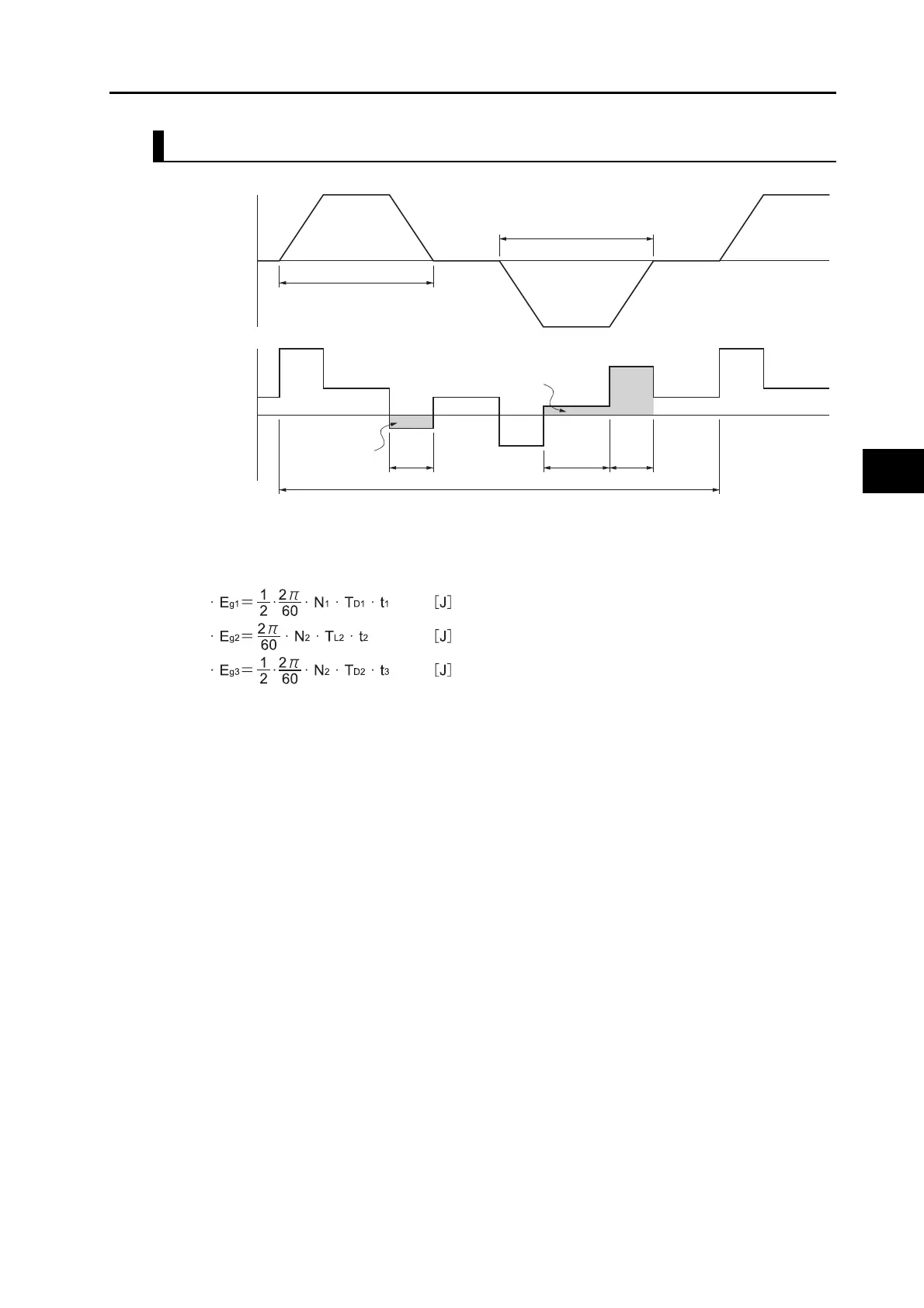4-42
4-4 Regenerative Energy Absorption
OMNUC G5-series AC Servomotors and Servo Drives User’s Manual (with Built-in EtherCAT Communications)
4
System Design
Vertical Axis
In the output torque graph, acceleration in the forward direction (rising) is shown as positive, and
acceleration in the reverse direction (falling) is shown as negative.
The regenerative energy values in each region can be derived from the following equations.
Note: Due to the loss of winding resistance, the actual regenerative energy will be approx. 90% of the
values derived from these equations.
For Servo Drive models with internal capacitors used for absorbing regenerative energy (i.e.,
Servo Drive models of 400 W or less), the values Eg
1
and Eg
2
+ Eg
3
(unit: J) must be lower than
the drive's regeneration absorption capacity. (The capacity depends on the model. For details,
refer to the next section.)
For
Servo Drive models with an Internal Regeneration Resistor used for absorbing regenerative
energy (i.e., Servo Drive models of 500 W or more), the average amount of regeneration Pr (unit:
W) must be calculated, and this value must be lower than the drive's regeneration absorption
capacity. (The capacity depends on the model.For details, refer to the next section.)
The average regeneration power (Pr)
is the regeneration power produced in 1 cycle of operation [W].
Motor operation
Motor output torque
+N1
−N2
t 1 t 2 t 3
T
E
g1
Eg3Eg3
Upward movement
Downward movement
T
D2
TL2
TD1
Eg2
N
1
,
N
2
:
Rotation speed at start of deceleration [r/min]
Deceleration torque [N·m]
Torque during downward movement [N·m]
Deceleration time [s]
Constant-speed driving time during downward movement
[s]
T
D1
,
T
D2
:
t
1
,
t
3
:
T
L2
:
t
2
:
2Eg1Eg
=
P
r
(
+
)/ T [W]
T: Operation cycle [s]
3Eg
+

